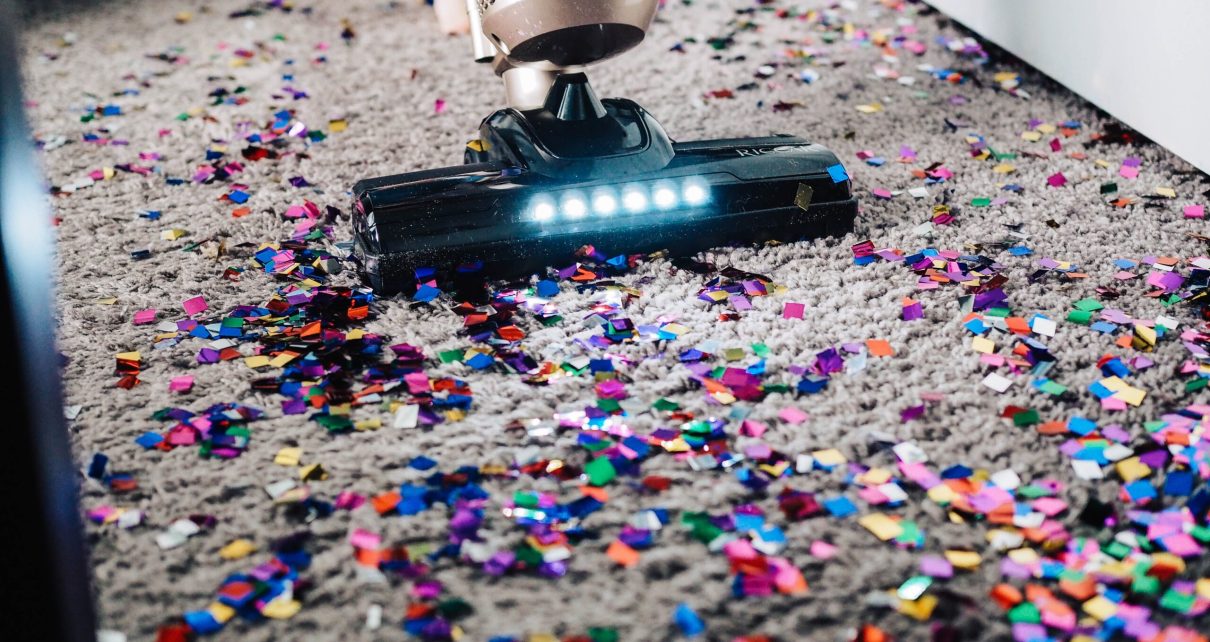Introduction to Robot Vacuum Cleaners
Welcome to the world of robot vacuum cleaners, where household chores have been revolutionised in ways we never thought possible! Gone are the days of dragging a cumbersome vacuum cleaner around or spending hours on your hands and knees with a broom. With a button press, these little robotic wonders glide effortlessly across your floors, sucking up dust and debris.
But what sets them apart from regular vacuums? It’s their adaptability. Yes, you heard it right – robot vacuum cleaners are efficient at cleaning and incredibly smart when adapting to different floor types. These mighty machines can tackle the task whether you have hardwood floors or plush carpets.
So, let’s dive deeper into the fascinating world of robot vacuum cleaners and discover how they seamlessly navigate various floor surfaces for an unparalleled clean!
The Importance of Adaptability for Efficient Cleaning
Keeping your home clean and tidy is challenging, especially when maintaining different flooring types. Each surface requires a unique approach to achieve optimal cleanliness, from slick hardwood floors to plush carpets. This is where robot vacuum cleaners come in, offering adaptability as a critical feature for efficient cleaning.
Adaptability ensures that these intelligent machines can easily navigate various floor types. Hardwood floors, for example, require gentle yet effective cleaning techniques to avoid scratches or damage. Robot vacuums equipped with sensors and advanced navigation systems are designed to detect the presence of hardwood surfaces and adjust their cleaning modes accordingly.
On the other hand, carpeted floors present their own set of challenges. The fibres trap dirt and debris more quickly compared to hard surfaces. However, robot vacuum cleaners have powerful suction capabilities tailored explicitly for deep-cleaning carpets. These devices use specialised brushes and high-powered motors that dislodge dirt from the carpet fibres while maintaining gentleness.
Challenges arise when transitioning between different floor types within one space. Abrupt changes in height or texture can pose obstacles for traditional vacuums but not for robots! With built-in sensors and intelligent mapping technologies, robot vacuum cleaners can effortlessly transition from hardwood to carpeted areas without getting stuck or losing efficiency.
Modern robot vacuum cleaners have incorporated several advanced features to ensure optimal surface performance. Some models include adjustable brush heights that automatically adapt based on the type of flooring being cleaned – reducing wear on delicate surfaces while maximising effectiveness on tougher ones.
Other features, such as multi-surface mapping, allow these devices to create virtual boundaries or designated cleaning zones specific to each floor type within your home. This ensures thoroughness without unnecessary repetition or missing spots altogether!`
How Robot Vacuum Cleaners Adapt to Hardwood Floors
Hardwood floors add a touch of elegance and warmth to any home. They are beautiful and require special care to maintain their shine and longevity. This is where robot vacuum cleaners come in, offering a convenient solution for keeping hardwood floors clean and free from dust, dirt, and debris.
One of the challenges with hardwood floors is that they can be easily scratched or damaged by traditional vacuum cleaners with rotating brushes. However, robot vacuum cleaners have advanced sensors that allow them to adapt their cleaning methods on hardwood surfaces. These sensors detect the type of surface they are cleaning and adjust their settings accordingly.
Regarding hardwood floors, robot vacuum cleaners use suction power and gentle bristle brushes to effectively remove dirt without causing any harm. The suction power ensures that all loose particles are picked up while the soft bristle brushes gently sweep away any stubborn debris.
Furthermore, some robot vacuum models offer mopping capabilities specifically designed for hardwood floors. These robots have built-in water tanks and microfiber pads that efficiently mop the floor without leaving streaks or excess moisture behind.
In addition to adapting their cleaning methods, robot vacuum cleaners easily navigate furniture legs and other obstacles on hardwood floors. They use mapping technology and intelligent algorithms to create an optimal cleaning path while avoiding collisions or falls down stairs.
Robot vacuum cleaners perform efficiently on hardwood floors without compromising their integrity with their adaptability features like sensor-based adjustments, powerful suction combined with gentle bristles, and specialised mopping capabilities.
So, if you want to save time sweeping or avoid damaging your precious hardwood flooring during regular cleaning sessions – let a trusty robotic helper take care of it! It’s a time-saving convenience at its best!
How Robot Vacuum Cleaners Adapt to Carpeted Floors
When it comes to cleaning carpeted floors, robot vacuum cleaners have become increasingly adept at adapting to the unique challenges they present. These autonomous machines have sensors and cutting-edge technology that allow them to easily navigate and clean these surfaces.
One of the main challenges with carpeted floors is dealing with embedded dirt and debris. Robot vacuums address this by using powerful suction capabilities combined with rotating brushes. These brushes effectively agitate and lift dirt deep within the carpet fibres, ensuring a thorough cleaning.
Another consideration when cleaning carpets is manoeuvrability. Robot vacuums are designed to be low-profile, allowing them to easily glide under furniture and reach those hard-to-reach areas where dust tends to accumulate. They also come equipped with anti-collision sensors, preventing them from getting stuck or causing damage while navigating obstacles.
Furthermore, some robot vacuum models feature specialised modes for carpet cleaning. These modes adjust the suction power and brush settings specifically for carpets, maximising their effectiveness in removing dirt and pet hair without damaging delicate fibres.
In addition to adaptability in terms of physical cleaning mechanisms, many robot vacuums also come equipped with advanced features such as mapping technology and smart home integration. This allows them to create detailed maps of your home’s layout, enabling more efficient navigation on different flooring surfaces.
Robot vacuum cleaners have come a long way in adapting to the demands of various floor types, including carpets. With their intelligent design features and innovative technologies, these automated cleaners provide an effective solution for keeping our homes clean without breaking a sweat.
Challenges with Different Floor Types and How Robots Overcome Them
Different floor types present unique challenges when it comes to keeping our homes clean. Hardwood floors require a gentle touch to avoid scratches, while carpets demand thorough dirt extraction. Thankfully, robot vacuum cleaners are designed to adapt and overcome these obstacles.
For hardwood floors, the main challenge lies in avoiding any damage caused by rough brushes or excessive suction power. Robot vacuums address this by utilizing soft bristles and sensors that detect obstacles or height variations. These intelligent machines adjust their cleaning settings accordingly to ensure gentle yet effective performance on hardwood surfaces.
On the other hand, carpeted floors pose their own set of challenges for robot vacuums. The carpet’s fibres can trap dirt deep within it, making it difficult for traditional vacuum cleaners to reach and remove everything effectively. However, robots combat this issue by employing powerful suction capabilities and rotating brushes explicitly designed for carpets.
In addition to adjusting cleaning methods for different floor types, robots face challenges such as navigating furniture legs or transitioning between surfaces seamlessly. To tackle these hurdles, advanced models come equipped with innovative mapping technology and cliff detection sensors that prevent falls down stairs or other drop-offs.
With continuous advancements in robotic technology, we can expect even more innovative features in the future that will further enhance robot vacuum cleaners’ adaptability to various floor types. From self-cleaning brush rolls to improved obstacle-detection mechanisms – there’s no limit to what these little helpers can achieve!
Robots have revolutionised how we maintain cleanliness at home – effortlessly adapting to diverse flooring materials like hardwood and carpeting. As manufacturers continue pushing boundaries in design and functionality, homeowners can rest assured knowing they have efficient companions tackling those never-ending dust bunnies beneath their feet!
Advanced Features for Optimal Performance on Different Surfaces
Robot vacuum cleaners have come a long way when cleaning different floor types. They are equipped with advanced features that enable them to adapt and perform optimally on various surfaces. These features ensure that the robot vacuum cleaner can tackle the task efficiently regardless of your home’s flooring.
One such feature is the ability to adjust suction power. Robot vacuums can automatically detect whether they are cleaning a hardwood floor or carpeted area and adapt their suction power accordingly. This ensures thorough cleaning without damaging delicate surfaces or leaving any dirt or debris behind.
Another essential feature is edge detection technology. Robot vacuums use sensors to detect edges and cliffs, preventing them from falling down stairs or getting stuck between furniture legs. This allows them to clean seamlessly around your home without any interruptions.
Furthermore, some robot vacuums also employ mapping capabilities using lasers or cameras. This enables them to create a digital map of your home and navigate through different rooms more efficiently. With this technology, they can identify obstacles and plan their route accordingly for optimal coverage and minimal overlap.
In addition, many modern robot vacuums come with brush systems specifically designed for different floor types. For example, they may have bristle brushes for carpets and rubberised brushes for hardwood floors. These specialised brushes ensure effective cleaning by agitating dirt from deep within the fibres of carpets or gently sweeping away debris from hard surfaces.
Moreover, some models offer mopping capabilities as well. They come equipped with water tanks and microfiber mop pads that can be attached underneath the vacuum cleaner body. This allows them to sweep up dust and damp mop hard floors simultaneously, thoroughly cleaning your feet.
Robot vacuum cleaners possess advanced features that cater to different surface types to provide optimal performance throughout your home without compromising efficiency or convenience.
Conclusion and Future Possibilities
In this article, we have explored how robot vacuum cleaners adapt to different floor types, showcasing their versatility and efficiency in keeping our homes clean. These intelligent machines are designed to tackle the challenges of hardwood floors and carpeted surfaces.
Robot vacuum cleaners excel on hardwood floors because they can navigate smoothly across the flat surface. The sensors integrated into these devices allow them to detect obstacles and adjust their cleaning pattern accordingly. They can easily manoeuvre around furniture legs and other objects, ensuring a thorough cleaning without causing any damage.
Regarding carpeted floors, robot vacuum cleaners rise to the challenge by adapting their suction power. Advanced models come equipped with brush rolls that agitate the carpet fibres, loosening dirt and debris for effective cleaning. Additionally, they automatically adjust their suction settings based on the surface type detected, providing optimal performance without damaging delicate carpets.
While some challenges may be associated with different floor types, robots overcome them through innovative features such as cliff detection sensors that prevent falls down stairs or other elevated surfaces. These smart devices also utilise mapping technology to create virtual boundaries or no-go zones within your home, preventing them from accessing areas where they may get stuck or cause disruption.
Looking towards the future of robot vacuum cleaners, we can expect even more impressive advancements in adaptability and performance. Manufacturers continuously improve navigation systems and integrate artificial intelligence capabilities into these machines. This means they will become even better at recognising different flooring materials and adjusting cleaning methods accordingly.
Furthermore, we might see increased compatibility with smart home systems, enabling seamless integration between robot vacuums and other household appliances for enhanced automation.



